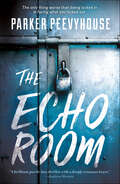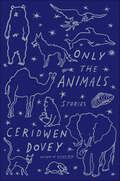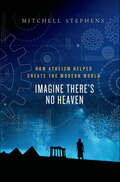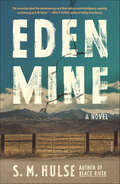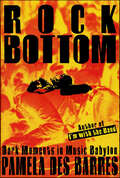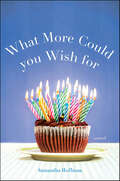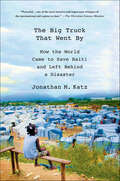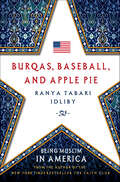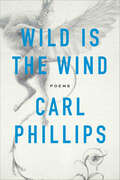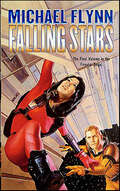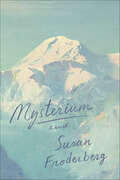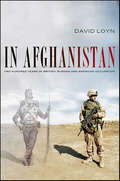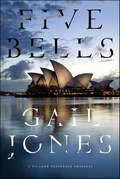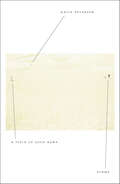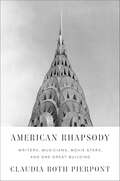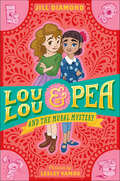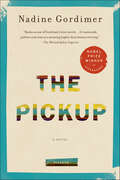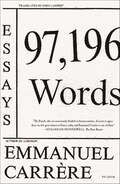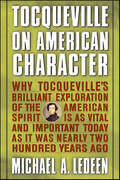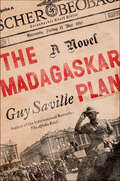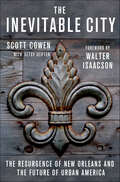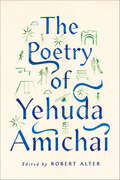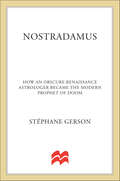- Table View
- List View
The Echo Room
by Parker PeevyhouseParker Peevyhouse's The Echo Room is a smart, claustrophobic, speculative young adult thriller with an immersive psychological mystery.The only thing worse than being locked in is facing what you locked out. Rett Ward knows how to hide. He's had six years of practice at Walling Home, the state-run boarding school where he learned how to keep his head down to survive.But when Rett wakes up locked in a small depot with no memory of how he got there, he can't hide. Not from the stranger in the next room. Or from the fact that there's someone else’s blood on his jumpsuit.Worse, every time he tries to escape, he wakes up right back where he started. Same day, same stranger, same bloodstained jumpsuit. As memories start to surface, Rett realizes that the logo on the walls is familiar, the stranger isn't a stranger, and the blood on his jumpsuit belongs to someone—or something—banging on the door to get in.“The Maze Runner meets Memento in this clever, engrossing sci-fi mystery!” —New York Times bestselling author Jeanne Ryan“The Echo Room is just brilliant.... Full of twists and blinding turns. Peevyhouse is a master storyteller.” —New York Times bestselling author Brittany CavallaroAt the Publisher's request, this title is being sold without Digital Rights Management Software (DRM) applied.
Only the Animals: Stories
by Ceridwen DoveyPerhaps only the animals can tell us what it is to be humanThe souls of ten animals caught up in human conflicts over the last century and connected to both famous and little-known writers in surprising ways tell their astonishing stories of life and death. In a trench on the Western Front, a cat recalls her owner Colette's theatrical antics in Paris. In Nazi Germany, a dog seeks enlightenment. A Russian tortoise once owned by the Tolstoys drifts in space during the Cold War. During the Siege of Sarajevo, a starving bear tells a fairy tale. And a dolphin sent to Iraq by the U.S. Navy writes a letter to Sylvia Plath. Exquisitely written, playful, and poignant, Ceridwen Dovey's Only the Animals is a remarkable literary achievement by one of our brightest young writers. An animal's-eye-view of humans at our brutal, violent worst and our creative, imaginative best, it asks us to find our way back to empathy not only for animals but for other people, and to believe again in the redemptive power of reading and writing fiction.
Imagine There's No Heaven: How Atheism Helped Create the Modern World
by Mitchell StephensThe historical achievements of religious belief have been large and well chronicled. But what about the accomplishments of those who have challenged religion? Traveling from classical Greece to twenty-first century America, Imagine There's No Heaven explores the role of disbelief in shaping Western civilization. At each juncture common themes emerge: by questioning the role of gods in the heavens or the role of a God in creating man on earth, nonbelievers help move science forward. By challenging the divine right of monarchs and the strictures of holy books, nonbelievers, including Jean- Jacques Rousseau and Denis Diderot, help expand human liberties, and influence the early founding of the United States. Revolutions in science, in politics, in philosophy, in art, and in psychology have been led, on multiple occasions, by those who are free of the constraints of religious life. Mitchell Stephens tells the often-courageous tales of history's most important atheists— like Denis Diderot and Salman Rushdie. Stephens makes a strong and original case for their importance not only to today's New Atheist movement but to the way many of us—believers and nonbelievers—now think and live.
Eden Mine: A Novel
by S. M. HulseWinner of the Christianity Today Book Award, FictionIn Eden Mine, the award-winning author of Black River examines the aftershocks of an act of domestic terrorism rooted in a small Montana town on the brink of abandonment, as it tears apart a family, tests the faith of a pastor and the loyalty of a sister, and mines the deep rifts that come when the reach of the government clashes with individual freedomIf I stay here, Jo, I know you could find me. If you wanted to, you could find me.For generations, the Fabers have lived near Eden Mine, scraping by to keep ahold of their family's piece of Montana. Jo and her brother, Samuel, will be the last. Despite a long battle, their property has been seized by the state through eminent domain—something Samuel deems a government theft. As Jo packs, she hears news of a bombing. Samuel went off to find work in Wyoming that morning, but soon enough, it's clear that he's not gone but missing, last seen by a security camera near the district courthouse?now a crime scene?in Elk Fork. And the nine-year-old daughter of a pastor at a nearby church lies in critical condition.Can the person Jo loves and trusts most have done this terrible thing? Can she have missed the signs? The last time their family met violence, Jo lost her ability to walk. Samuel took care of her, outfitted their barn with special rigging so she could still ride their mule. What secrets has he been keeping? As Jo watches the pastor fight for his daughter, watches the authorities hunt down a criminal, she wrestles with an impossible choice: Must she tell them where Samuel might be? Must she choose between loyalty and justice? Between the brother she knows and the man he has become?A timely story of the tensions splintering families and communities all over this country, S.M. Hulse's Eden Mine is also a steady-eyed gaze into the ideals of the West and the legacies of violence, a moving account of faith in the face of evil, and a heartrending reckoning of the terrible choices we make for the ones we love.
Rock Bottom: Dark Moments in Music Babylon
by Pamela Des BarresThe dark moments of rock history fascinate and tantalize like the pathos of Greek tragedy. The bottom sinks lower, the air seems colder, the bad endings--when they are bad--seem beyond bad. The unlucky practitioners of our most thriving form of communal experience seem to hit rock bottom in ways only the most glamorous among us can--publicly. The stories remain obscure, half-seen in the shadowlands. In her familiar style, Pamela Des Barres shines light on the people whose art remains the background music to our popular culture.Des Barres asks, "What comes first, the addiction or the rock and roll?" The first apparent rock-and-roll death occured on Christmas Eve in 1959, when Johnny Ace blew his head off in a game of Russian Roulette between shows. Buddy Holly's four-seater plane crashes. Marvin Gaye's father shoots his son. Kurt Cobain puts a gun to his head. The headlines tell it all: ROCK SINGER FACES MANSLAUGHTER CHARGE, JAMES BROWN ADDICTED TO PCP, BASSIST FOR BAND HOLE FOUND DEAD. The messed-up lives, the burned-out golden boys and girls, the violence, the route toward rock bottom--Des Barres has a line on the souls of the public figures who lived desperate private lives to entertain us all.
What More Could you Wish For: A Novel
by Samantha HoffmanDo you ever think about your first love, the one you thought you couldn't live without? Libby Carson does, and when she receives a marriage proposal she turns to SearchForClassmates.com to reach out to her high-school boyfriend, Patrick … just for fun. But fun soon turns to flirtation and Libby, startled to feel the same stirrings of passion she felt at seventeen, wonders if she's having a mid-life crisis. Is it possible, she wonders, to feel so giddy and carefree at fifty? Is it possible to sustain it? Events take a turn when Libby is faced with not one, but two offers of marriage. There's no getting around it now—Libby must take stock of her life and everyone in it, to answer for herself the question that everyone has been asking her—What more could you wish for?
The Big Truck That Went By: How the World Came to Save Haiti and Left Behind a Disaster
by Jonathan M. KatzOn January 12, 2010, the deadliest earthquake in the history of the Western Hemisphere struck the nation least prepared to handle it. Jonathan M. Katz, the only full-time American news correspondent in Haiti, was inside his house when it buckled along with hundreds of thousands of others. In this visceral, authoritative first-hand account, Katz chronicles the terror of that day, the devastation visited on ordinary Haitians, and how the world reacted to a nation in need. More than half of American adults gave money for Haiti, part of a monumental response totaling $16.3 billion in pledges. But three years later the relief effort has foundered. It's most basic promises—to build safer housing for the homeless, alleviate severe poverty, and strengthen Haiti to face future disasters—remain unfulfilled.The Big Truck That Went By presents a sharp critique of international aid that defies today's conventional wisdom; that the way wealthy countries give aid makes poor countries seem irredeemably hopeless, while trapping millions in cycles of privation and catastrophe. Katz follows the money to uncover startling truths about how good intentions go wrong, and what can be done to make aid "smarter."With coverage of Bill Clinton, who came to help lead the reconstruction; movie-star aid worker Sean Penn; Wyclef Jean; Haiti's leaders and people alike, Katz weaves a complex, darkly funny, and unexpected portrait of one of the world's most fascinating countries. The Big Truck That Went By is not only a definitive account of Haiti's earthquake, but of the world we live in today.
Burqas, Baseball, and Apple Pie: Being Muslim in America
by Ranya Tabari IdlibyFor many Americans, the words ‘American' and ‘Muslim' simply do not marry well; for many the combination is an anathema, a contradiction in values, loyalties, and identities. This is the story of one American Muslim family—the story of how, through their lives, their schools, their friends, and their neighbors, they end up living the challenges, myths, fears, hopes, and dreams of all Americans. They are challenged by both Muslims who speak for them and by Americans who reject them. In this moving memoir, Idliby discusses not only coming to terms with what it means to be Muslim today, but how to raise and teach her children about their heritage and religious legacy. She explores life as a Muslim in a world where hostility towards Muslims runs rampant, where there is an entire industry financed and supported by think tanks, authors, film makers, and individual vigilantes whose sole purpose is to vilify and spread fear about all things Muslim. Her story is quintessentially American, a story of the struggles of assimilation and acceptance in a climate of confusion and prejudice—a story for anyone who has experienced being an "outsider" inside your own home country.
Wild Is the Wind: Poems
by Carl PhillipsWinner of the Los Angeles Times Book PrizeA powerful, inventive collection from one of America's most critically admired poets“What has restlessness been for?” In Wild Is the Wind, Carl Phillips reflects on love as depicted in the jazz standard for which the book is named—love at once restless, reckless, and yet desired for its potential to bring stability. In the process, he pitches estrangement against communion, examines the past as history versus the past as memory, and reflects on the past’s capacity both to teach and to mislead us—also to make us hesitate in the face of love, given the loss and damage that are, often enough, love’s fallout. How “to say no to despair”? How to take perhaps that greatest risk, the risk of believing in what offers no guarantee? These poems that, in their wedding of the philosophical, meditative, and lyric modes, mark a new stage in Phillips’s remarkable work, stand as further proof that “if Carl Phillips had not come onto the scene, we would have needed to invent him. His idiosyncratic style, his innovative method, and his unique voice are essential steps in the evolution of the craft” (Judith Kitchen, The Georgia Review).
Survivors Club: The True Story of a Very Young Prisoner of Auschwitz
by Michael Bornstein Debbie Bornstein HolinstatA New York Times bestseller“Both moving and memorable, combining the emotional resolve of a memoir with the rhythm of a novel.” —New York Times Book ReviewIn 1945, in a now-famous piece of World War II archival footage, four-year-old Michael Bornstein was filmed by Soviet soldiers as he was carried out of Auschwitz in his grandmother’s arms. Survivors Club tells the unforgettable story of how a father’s courageous wit, a mother’s fierce love, and one perfectly timed illness saved his life, and how others in his family from Zarki, Poland, dodged death at the hands of the Nazis time and again with incredible deftness. Working from his own recollections as well as extensive interviews with relatives and survivors who knew the family, Michael relates his inspirational Holocaust survival story with the help of his daughter, Debbie Bornstein Holinstat. Shocking, heartbreaking, and ultimately uplifting, this narrative nonfiction offers an indelible depiction of what happened to one Polish village in the wake of the German invasion in 1939.This thoroughly-researched and documented book can be worked into multiple aspects of the common core curriculum.A New York City Public Library Notable Best Book for Teens
Falling Stars (The Firestar Saga)
by Michael FlynnIn the early years of the 21st century humanity has advanced step by slow step into space, but has discovered through constant monitoring of the heavens that certain asteroids have changed their orbits and are headed for horrifying impact with Earth. Urgent action is required, but politics and a worldwide financial crash get in the way. The members of the van Huyten family, led by matriarch Mariesa who heads the vast space industry complex she has spent her life developing, the Pooles with their computer and security expertise, many political movers and shakers and dedicated pilots and space travelers of all stripes must pull together to save humanity from disaster. From the government offices and factories of Earth, to the Low Earth Orbit station, to manufacturing facilities on the moon, all of space-going humanity is united in an epic effort to save the planet from certain destruction and a new Dark Age, or perhaps even the extinction of all life on Earth. At the Publisher's request, this title is being sold without Digital Rights Management Software (DRM) applied.
Mysterium: A Novel
by Susan FroderbergA BBC Summer Read"Must-read . . . [Mysterium] ascends, literally and figuratively, vividly capturing the outer edge of physical, mental, emotional and spiritual travail." --The Washington PostInspired by the true story of Nanda Devi Unsoeld’s tragic 1976 death while climbing her namesake mountain, Susan Froderberg’s novel Mysterium tells the tale of a courageous woman’s ascent to the summit of India’s highest peak to honor her fallen mother.Mysterium, known as Mount Sarasvati, looms over the Indian Himalayas as the range’s tallest peak in the dazzling fictional world Susan Froderberg has created.Sarasvati “Sara” Troy is determined to reach the peak for which she was christened, and to climb it in honor of her mother, who perished in a mountaineering accident when Sara was just a child. She asks her father, a celebrated mountaineer and philosophy professor, to organize and lead the expedition.The six climbers he recruits are an uneasy mix. They include his longtime friend Dr. Arun Reddy, a recent widower, and Reddy’s son, who often challenges his father; Wilder Carson, the acclaimed climber who is tormented by the death of his brother; Wilder’s wife, Vida, a former lover of Dr. Reddy; and the distinguished scholar of climbing Virgil Adams and his wife, Hillary. Porters and Sherpas are recruited in India to assist and be part of the team.The party’s journey is harrowing, taking them from the mountain’s gorge, into its sanctuary, and finally onto the summit, a path that evokes the hell, purgatory, and heaven of Dante’s Inferno. As the air thins and this unforgettable journey unfolds, Sara emerges as a Beatrice-like figure, buoying her companions up the mountain through the sheer strength and beauty of her being. Both monumental quest and dreamlike odyssey, Mysterium is infused with the language of climbing and profound existential insight.
In Afghanistan: Two Hundred Years of British, Russian and American Occupation
by David LoynAfghanistan has been a strategic prize for foreign empires for more than 200 years. The British, Russians, and Americans have all fought across its beautiful and inhospitable terrain, in conflicts variously ruthless, misguided and bloody. This violent history is the subject of David Loyn's magisterial book. It is a history littered with misunderstandings and broken promises, in which the British, the Russians, and later the Americans, constantly underestimated the ability of the Afghans. In Afghanistan brilliantly brings to life the personalities involved in Afghanistan's relationship with the world, chronicling the misunderstandings and missed opportunities that have so often led to war. With 30 years experience as a foreign correspondent, David Loyn has had a front-row seat during Afghanistan's recent history. In Afghanistan draws on David Loyn's unrivalled knowledge of the Taliban and the forces that prevail in Afghanistan, to provide the definitive analysis of the lessons these conflicts have for the present day.
Five Bells: A Novel
by Gail JonesA Picador Paperback Original On a radiant day in Sydney, four adults converge on Circular Quay, site of the iconic Opera House and the Sydney Harbor Bridge. Crowds of tourists mix with the locals, enjoying the glorious surroundings and the play of light on water. But just as Circular Quay resonates with Australia's past, each of the four carries a complicated history from elsewhere. Each person is haunted by past secrets and guilt. Ellie is preoccupied by her sexual experiences as a girl, James by a tragedy for which he feels responsible, Catherine by the loss of her beloved brother in Dublin, and Pei Xing by her imprisonment during China's Cultural Revolution. Told over the course of a single Saturday, Five Bells describes four lives that come to share not only a place and a time but also mysterious patterns and ambiguous symbols, including a barely glimpsed fifth figure, a young child. By nightfall, when Sydney is drenched in a summer rainstorm, each life will have been transformed by the events of this day.
A Piece of Good News: Poems
by Katie PetersonA rich and challenging new collection from the young award-winning poetIn those days I began to see light under everybushel basket, light nearly splittingthe sides of the bushel basket. Light camethrough the rafters of the dairy where the gracklescongregated like well-taxed citizensuntransfigured even by hope. Understand I was the oneunderneath the basket. I was certain I had nothing to say. When I grew restless in the interior,the exterior gave.Dense, rich, and challenging, Katie Peterson’s A Piece of Good News explores interior and exterior landscapes, exposure, and shelter. Imbued with a hallucinatory poetic logic where desire, anger, and sorrow supplant intelligence and reason, these poems are powerful meditations of mourning, love, doubt, political citizenship, and happiness. Learned, wise, and witty, Peterson explodes the possibilities of the poetic voice in this remarkable and deeply felt collection.
American Rhapsody: Writers, Musicians, Movie Stars, and One Great Building
by Claudia Roth PierpontRanging from the shattered gentility of Edith Wharton's heroines to racial confrontation in the songs of Nina Simone, American Rhapsody presents a kaleidoscopic story of the creation of a culture. Here is a series of deeply involving portraits of American artists and innovators who have helped to shape the country in the modern age.Claudia Roth Pierpont expertly mixes biography and criticism, history and reportage, to bring these portraits to life and to link them in surprising ways. It isn't far from Wharton's brave new women to F. Scott Fitzgerald's giddy flappers, and on to the big-screen command of Katharine Hepburn and the dangerous dames of Dashiell Hammett's hard-boiled world. The improvisatory jazziness of George Gershwin's Rhapsody in Blue has its counterpart in the great jazz baby of the New York skyline, the Chrysler Building. Questions of an American acting style are traced from Orson Welles to Marlon Brando, while the new American painting emerges in the gallery of Peggy Guggenheim. And we trace the arc of racial progress from Bert Williams's blackface performances to James Baldwin's warning of the fire next time, however slow and bitter and anguished this progress may be.American Rhapsody offers a history of twentieth-century American invention and genius. It is about the joy and profit of being a heterogeneous people, and the immense difficulty of this human experiment.
Lou Lou & Pea and the Mural Mystery (Lou Lou and Pea)
by Jill DiamondPerfect for readers outgrowing Ivy & Bean and the Nancy Clancy books!BFFs Lou Lou Bombay and Peacock Pearl love their PSPP (Post-School Pre-Parents) tea parties on Friday afternoons, where they recap the school week, chat about Pea's latest fashions, and tend to Lou Lou's burgeoning backyard garden. But when a series of small crimes crop up around El Corazon, their quaint and quirky town, right before the Dia de Los Muertos Parade, the girls must join forces (horticultural know-how and artistic genius) to solve the mystery. Debut author Jill Diamond weaves a delightful romp, full of colorful characters and gentle intrigue, while artist Lesley Vamos punctuates the story with black-and-white illustrations throughout. Backmatter includes crafting activities and a glossary of Spanish terms!
Genpei: A Fantasy
by Kara DalkeyThroughout the twelfth century, two rival clans, the Minomoto and the Taira, struggled for supremacy in Imperial Japan. Each attempted a rebellion and, for a time, the Taira gained ascendancy. But their rule turned despotic and at last, during the Genpei War of 1179-1185, the Minomoto drove the Taira out of the capital and took control for themselves.At the final battle of Dan-no-ura, the Taira-born child-emperor and his family all jumped into the Inland Sea to avoid capture and drowned. With them was lost the Imperial Sword, never to be seen again. The Minomoto leader took control, moved the capital, and became the first Shogun of Japan.That much is history.But wherefore come the tales of superhuman strength, the incredible insight, the clandestine knowledge of the Genpei War's heroes? There has been much speculation throughout the generations. Some have called the Minomoto's rise to power destiny, others call it a deal between humans and spirits-since even in death, the eternal Japanese warrior's spirit cannot be laid to rest. How much is truth, how much legend? One can never tell, for there are older, stranger tales as well....At the Publisher's request, this title is being sold without Digital Rights Management Software (DRM) applied.
The Pickup: A Novel
by Nadine GordimerThe Nobel Laureate's psychologically penetrating story of the love affair between a rich South African and the illegal alien she "picks up" on a whimWho picked up whom? Is the pickup the illegal immigrant desperate to evade deportation to his impoverished desert country? Or is the pickup the powerful businessman's daughter trying to escape a priveleged background she despises? When Julie Summers' car breaks down in a sleazy street, at a garage a young Arab emerges from beneath the chassis of a vehicle to aid her. The consequences develop as a story of unpredictably relentless emotions that overturn each one's notion of the other, and of the solutions life demands for different circumstances. She insists on leaving the country with him. The love affair becomes a marriage-that state she regards as a social convention appropriate to her father's set and her mother remarried in California, but decreed by her 'grease monkey' in order to present her respectably to his family. In the Arab village, while he is dedicated to escaping, again, to what he believes is a fulfilling life in the West, she is drawn by a counter-magnet of new affinities in his close family and the omnipresence of the desert. A novel of great power and concision, psychological surprises and unexpected developments, The Pickup is a story of the rites of passage that are emigration/immigration, where love can survive only if stripped of all certainties outside itself.
97,196 Words: Essays
by Emmanuel CarrèreA selection of the best short work by France's greatest living nonfiction writerA New York Times Notable Books of 2020No one writes nonfiction like Emmanuel Carrère. Although he takes cues from such literary heroes as Truman Capote and Janet Malcolm, Carrère has, over the course of his career, reinvented the form in a search for truth in all its guises. Dispensing with the rules of genre, he takes what he needs from every available form or discipline—be it theology, historiography, fiction, reportage, or memoir—and fuses it under the pressure of an inimitable combination of passion, curiosity, intellect, and wit. With an oeuvre unique in world literature for its blend of empathy and playfulness, Carrère stands as one of our most distinctive and important literary voices.97,196 Words introduces Carrère’s shorter works to an English-language audience. Featuring more than thirty extraordinary essays written over an illustrious twenty-five-year period of Carrère’s creative life, this collection shows an exceptional mind at work. Spanning continents, histories, and personal relationships, and treating everything from American heroin addicts to the writing of In Cold Blood, from the philosophy of Philip K. Dick to a single haunting sentence in a minor story by H. P. Lovecraft, from Carrère’s own botched interview with Catherine Deneuve to the week he spent following the future French president Emmanuel Macron, 97,196 Words considers the divides between truth, reality, and our shared humanity as it explores remarkable events and eccentric lives, including Carrère’s own.
Tocqueville on American Character: Why Tocqueville's Brilliant Exploration of the American Spirit Is as Vital and Important Today as It Was Nearly Two Hundred Years Ago
by Michael A. LedeenIn 1831, Alexis De Tocqueville, a twenty-six-year-old French aristocrat, spent nine months travelling across the United States. From the East Coast to the frontier, from the Canadian border to New Orleans, Tocqueville observed the American people and the revolutionary country they'd created. His celebrated Democracy in America, the most quoted work on America ever written, presented the new Americans with a degree of understanding no one had accomplished before or has since. Astonished at the pace of daily life and stimulated by people at all levels of society, Tocqueville recognized that Americans were driven by a series of internal conflicts: simultaneously religious and materialistic; individualistic and yet deeply involved in community affairs; isolationist and interventionist; pragmatic and ideological.Noted author Michael Ledeen takes a fresh look at Tocqueville's insights into our national psyche and asks whether Americans' national character, which Tocqueville believed to be wholly admirable, has fallen into moral decay and religious indifference.Michael Ledeen's sparkling new exploration has some surprising answers and provides a lively new look at a time when character is at the center of our national debate.
The Madagaskar Plan: A Novel
by Guy SavilleGuy Saville's The Madagaskar Plan imagines a disturbing alternate history in which Nazi victory in World War II brings their "Final Solution" ever closerThe year is 1953. There is peace in Europe, but a victorious Germany consolidates power in Africa. The lynchpin to its final solution is Madagaskar. Hitler has ordered the resettlement of European Jews to the remote island.British forces conspire to incite colony-wide revolt, resting their hopes on the expertise of Reuben Salois, an escaped leader of Jewish resistance. Ex-mercenary Burton Cole scours the island for his wife and child. But as chaos descends and the Nazis brutally suppress the nascent insurrection, Cole must decide whether he is master of-or at the mercy of-history. The Madagaskar Plan is alternate history of the highest order, a thriller of terrifying scope based on the Nazis' actual plans prior to the Holocaust.
The Inevitable City: The Resurgence of New Orleans and the Future of Urban America
by Betsy Seifter Scott CowenAfter seven years of service as the president of Tulane University, Scott Cowen watched the devastation of his beloved New Orleans at the hands of Hurricane Katrina. When federal, state, and city officials couldn't find their way to decisive action, Cowen, known for his gutsy leadership, quickly partnered with a coalition of civic, business, and nonprofit leaders looking to work around the old institutions to revitalize and transform New Orleans. This team led the charge to restore equilibrium and eventually to rebuild. For the past nine years, Cowen has continued this work, helping to bring the city of New Orleans back from the brink. The Inevitable City presents 10 principles that changed the game for this city, and, if adopted, can alter the curve for any business, endeavor, community—and perhaps even a nation.This is the story of the resurgence and reinvention of one of America's greatest cities. Ordinary citizens, empowered to actively rescue their own city after politicians and government officials failed them, have succeeded in rebuilding their world. Cowen was at the leading edge of those who articulated, shaped, and implemented a vision of transformative change that has yielded surprising social progress and economic growth: a drowned city identified with the shocking images of devastation and breakdown has transformed itself into a mecca of growth, opportunity, and hope.
The Poetry of Yehuda Amichai (The Copenhagen Trilogy)
by Yehuda AmichaiThe largest English-language collection to date from Israel’s finest poetFew poets have demonstrated as persuasively as Yehuda Amichai why poetry matters. One of the major poets of the twentieth century, Amichai created remarkably accessible poems, vivid in their evocation of the Israeli landscape and historical predicament, yet universally resonant. His are some of the most moving love poems written in any language in the past two generations—some exuberant, some powerfully erotic, many suffused with sadness over separation that casts its shadow on love. In a country torn by armed conflict, these poems poignantly assert the preciousness of private experience, cherished under the repeated threats of violence and death. Amichai’s poetry has attracted a variety of gifted English translators on both sides of the Atlantic from the 1960s to the present. Assembled by the award-winning Hebrew scholar and translator Robert Alter, The Poetry of Yehuda Amichai is by far the largest selection of the master poet’s work to appear in English, gathering the best of the existing translations as well as offering English versions of many previously untranslated poems. With this collection, Amichai’s vital poetic voice is now available to English readers as it never has been before.
Nostradamus: How an Obscure Renaissance Astrologer Became the Modern Prophet of Doom
by Stéphane GersonWe all know the name Nostradamus, but who was he really? Why did his predictions become so influential in Renaissance Europe and then keep resurfacing for nearly five centuries? And what does Nostradamus's endurance in the West say about us and our own world? In Nostradamus: How an Obscure Renaissance Astrologer Became the Modern Prophet of Doom, historian Stéphane Gerson takes readers on a journey back in time to explore the life and afterlife of Michel de Nostredame, the astrologer whose Prophecies have been interpreted, adopted by successive media, and eventually transformed into the Gospel of Doom for the modern age. Whenever we seem to enter a new era, whenever the premises of our worldview are questioned or imperiled, Nostradamus offers certainty and solace. In 1666, guests at posh English dinner parties discussed his quatrain about the Great Fire of London. In 1942, the Jewish writer Irène Némirovsky latched her hopes for survival to Nostradamus' prediction that the war would soon end. And on September 12, 2001, teenagers proclaimed on the streets of Brooklyn that "this guy, Nostradamus" had seen the 9/11 attacks coming. Through prodigious research in European and American archives, Gerson shows that Nostradamus — a creature of the modern West rather than a vestige from some antediluvian era — tells us more about our past and our present than about our future. In chronicling the life of this mystifying figure and the lasting fascination with his predictions, Gerson's book becomes a historical biography of a belief: the faith that we can know tomorrow and master our anxieties through the powers of an extraordinary but ever more elusive seer.
